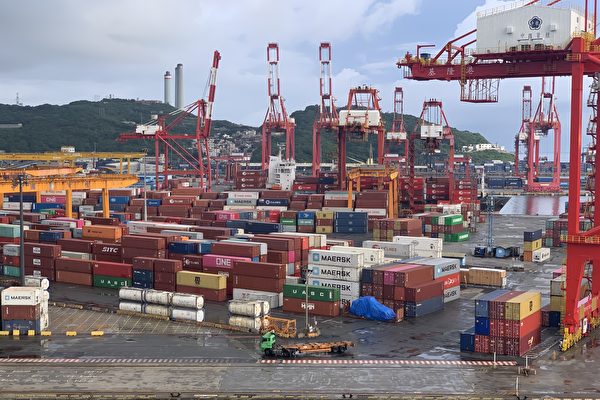In the first four months of this year, Taiwan’s exports to China dropped by 3.7% compared to the previous year, reaching the lowest point in 22 years. At the same time, exports to the United States saw a significant increase, with a year-on-year growth rate of 64.1%. This indicates that Taiwanese companies are adjusting their supply chains by moving some production capacity out of China, leading to a successful and mutually beneficial relationship with the United States.
According to data released by the Taiwan Ministry of Finance on Wednesday (May 8th), from January to April this year, Taiwan’s exports to China (including Hong Kong) amounted to $45.3 billion, a decrease of 3.7% compared to the same period the previous year, accounting for 30.7% of total exports.
Officials in Taiwan attribute this decline not only to China’s weak economy but also to the reorganization of supply chains due to the tense situation between the United States and China.
Analysis by Nikkei Asia indicates that this proportion is the lowest in 22 years, demonstrating a decreasing reliance of Taiwan’s exports on China. Prior to 2022, Taiwan’s exports to China had consistently accounted for around 40% of total exports. In 2023, with China’s economic challenges becoming apparent, the proportion of exports to China had already dropped to slightly above 35%, a trend that has continued into 2024.
It is noteworthy that exports of semiconductors and other electronic components to China are significantly decreasing.
The Director of Statistics at the Ministry of Finance, Mei-Na Tsai, mentioned that besides slow domestic demand in China, the supply chain for digital products and other goods has shifted to regions outside of China, leading to a reduction in Taiwan’s exports to China.
Meanwhile, Taiwan’s exports to the United States and Southeast Asian countries have shown significant growth.
From January to April, exports to the United States reached $34.78 billion, an increase of $13.59 billion compared to the previous year, with a year-on-year growth rate of 64.1%. Exports to ASEAN also grew by 25% to reach $28.8 billion, indicating that Thailand, Vietnam, and other Southeast Asian countries have become destinations for diversifying Taiwan’s production capacity. The export share to the United States and ASEAN in the January-April period was 23.5% and 19.5% respectively.
The Ministry of Finance in Taiwan highlighted that in April, exports to the United States reached a new high of $10.16 billion, an 81.6% increase compared to the previous year. Information, communication, and audio-visual products increased by $4.6 billion, doubling in growth. The export of electronic components also increased by 61.3% year-on-year.
From January to April, Taiwan’s overall exports grew by 10.6% to reach $147.8 billion. The decline in exports to China was offset by robust growth in exports to the United States and ASEAN countries.
After China joined the World Trade Organization in 2001, the share of China in Taiwan’s exports sharply rose. However, since the late 2010s with worsening tensions between the US and China, Taiwanese companies, urged by their American customers, started diversifying production locations. A portion of the production capacity that was concentrated in China has now shifted to Taiwan, the US, Southeast Asia, and other regions.
Nikkei Asia points out that this change is most apparent in server products, where production capacity is returning to Taiwan. Restrictions on chip exports by the US have also had an impact. TSMC was prohibited from exporting advanced semiconductors to Chinese companies like Huawei, putting downward pressure on exports to China.
The Taiwanese authorities are encouraging companies to adjust their supply chains. Outgoing President Tsai Ing-wen of the Republic of China (Taiwan) supports factories returning to Taiwan, reversing the policy of the previous administration. The incoming government under President-Elect Lai Ching-te is expected to continue reducing Taiwan’s economic dependence on China.

